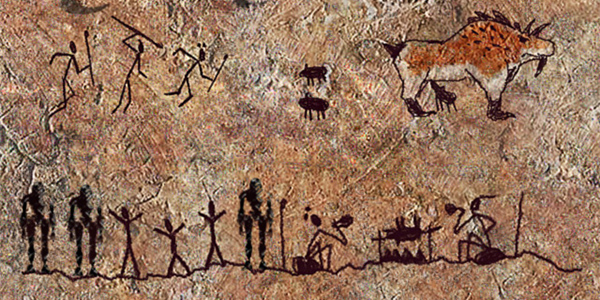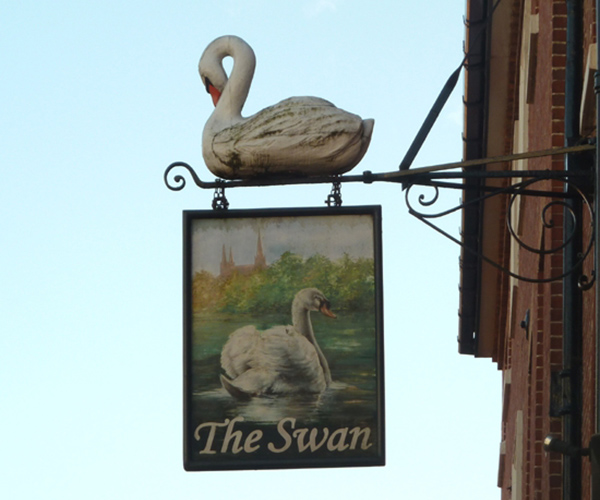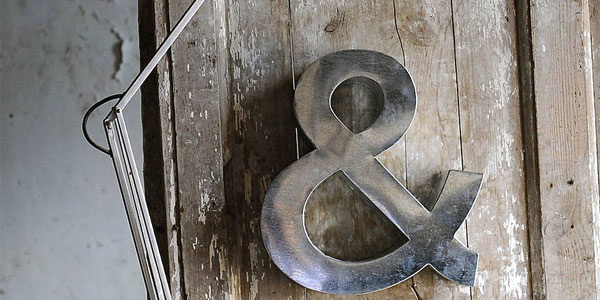We look at just how far we have come from cave-painting and mediaeval sign-writing up to modern day laser-cutting and back-lighting in the world of signs.
It’s a sign of the times perhaps that modern developments have brought massive changes to the way placards and notices are designed and made.
Throughout the 20th century new eye-catching features have emerged such as light bulbs, neon, flashing letters and the most recent innovation, digital displays.
In the last few decades the sign writing industry has been almost swallowed up to be replaced by signs designed on computers, often in 3D. However up until the 1990s sign writers might be typically employed to paint shop fascias, but are a rarity today.
Companies making signs can used design programmes to create them, rather than relying on the traditional art of individual sign painters. However although technology has advanced, eye-catching results and quality is still important to a lot of companies producing them. The rate they are produced is certainly quicker but a strong design and long-lasting finish are still crucial for a business to make its mark.
Traditional metal is still used, but dramatic finishes can be created with a range of new ideas for metal treatments. This includes more weather-proof and fingerprint-proof resistant finishes as well as a rainbow of colours and effects. Sign materials can also include plastics, foam and wood products.

Neolithic painting in the famous Lascaux caves, France
The earliest example of signs have their roots back in prehistoric times. The earliest signs were cave paintings. These ‘signs’ revealed good hunting grounds, or warned others of danger or enlightened them on interesting finds.
Before the advent of free education many people were illiterate. Often pictures were used to convey a message. Traditional sign writers went to town with beautiful illustrated artwork to make a lasting impression outside a coaching inn or public place. The traditional pub signs still show some of the highlights of medieval sign design.

Traditional pub sign from mediaeval origins
Early examples of historic signs tend to be simple and functional. Signs on listed buildings often have hand painted, raised, enamelled, gilded or mosaic details as the Victorians evolved the idea of signs using more ornate and elaborate details. Architecture and signs from this period represents experimentation with materials and letters.
In the early twentieth century, as increasingly tall buildings were constructed, letters were often incorporated into the building itself. On exteriors and interiors letters could be cast into concrete or crafted in metalwork and set off with decorative detailing. This lettering often was designed to match the building it was to adorn, often helping the business or shop really stand out on the street.
Today the availability of many different metal finishes provide the logo or sign designer with some creative and attractive options. Metals such as copper, brass, bronze and stainless steel allow the sign making company to mix and match different finishes to create a unique end result. These range from a simple clear coat to anodized or painted colours and include brushed and polished finishes.
The high-end look of brushed metal is a popular choice for business signs. The brushed metal can be solid metal, a laminate on top of an expensive metal or substrate, or even an extremely thin layer deposited with a chemical process (such as PVD). Typically, brushed metal sign materials are finished in a silver or gold colour.
Brushed metal can serve as the background for cut vinyl logo signs or for almost life-size letters or more diminutive designs for the inside and outside of businesses. Depending upon the desired “look” for the finished sign (and also depending upon budget), using different types of brushed metal adds a bid of flourish to the letters.
Also popular at the luxury end of the market are fabricated metal sign letters which can be a combination of brushed stainless and polished stainless steel finishes which can also be used externally.
Sign it’s time for change? Signs can be formed from “flat-cut” letters out of a solid sheet of metal, which gives a striking end result. Using personally selected colours, you can keep the continuity of coloured metals throughout your room or building. You may want to work the same design ideas from an interior into your custom metal logo sign, for a well thought out, attractive scheme that shows both style and professionalism.

Polished PVD coated stainless steel ampersand